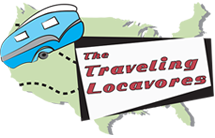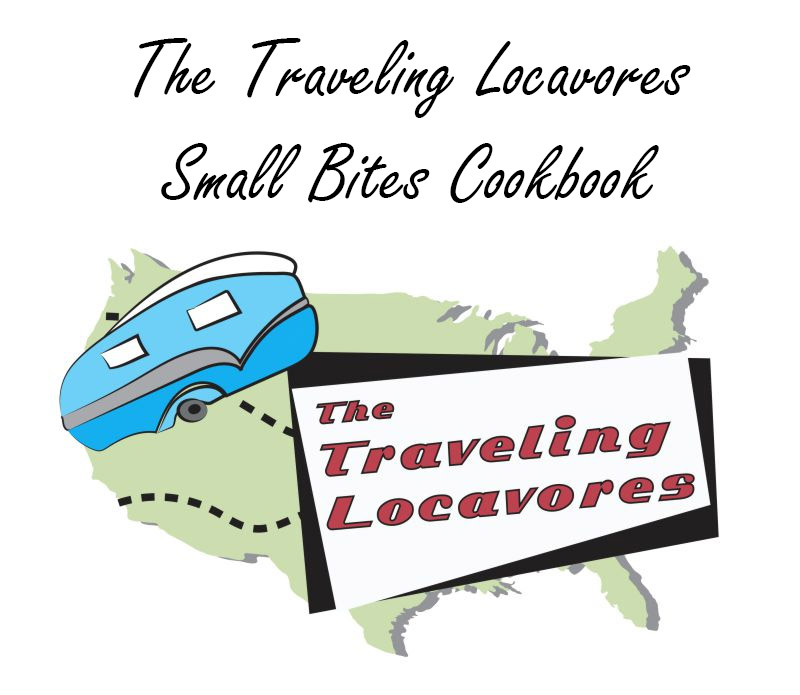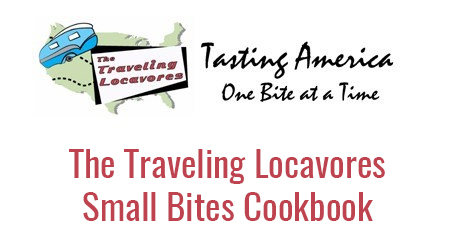Thomas Jefferson’s Monticello was just about a half hour drive from Small’s Country Campgrounds. It has been a place I’ve wanted to explore since I was a kid in school. And since it was only a short drive from Small Country Campgrounds in Louisa, VA, we decided to go and spend the day.

Meet my old friend, and I do mean old, Thomas Jefferson

A huge sprawling Live Oak on the grounds in front of Thomas Jefferson’s Monticello

The front entrance of Thomas Jefferson’s Monticello
It was not his work as a lawyer, architect, writer, gentleman scientist, and life as patriarch of an extended family at Monticello, both white and black that fascinated me most. Of course I admired him for being the author of the Declaration of Independence, being the third President of the United States, the founder of University of Virginia and a huge proponent of religious freedom. But it was his life as a farmer and wine maker that piqued my interest most.
Early Life and Monticello

In the foyer of Thomas Jefferson’s Monticello Native American artifacts are displayed

Monticello Library was a multi-use room.

Architectural drawings of Thomas Jefferson’s on display in the Library
Jefferson was born on April 13, 1743, on his father’s plantation of Shadwell located at the foothills of the Blue Ridge Mountains in central Virginia. When Jefferson was fourteen, his father, Peter, died, and he inherited a sizable estate of approximately 5,000 acres, which included the house at Shadwell, but Jefferson dreamed of living on a mountain
Thomas Jefferson’s Monticello

This room in Thomas Jefferson’s Monticello was used for many purposes, including music

Thomas Jefferson’s bed chamber

The informal dining room at Thomas Jefferson’s Monticello is adorned with Wedgewood
In 1768 he contracted for the clearing of a 250 foot square site at the very top of the 868-foot mountain that rose above Shadwell and where he played as a boy. He name this mountain Monticello, and the house that he would build and rebuild over a forty-year period also became known as Monticello. He would later refer to this ongoing project, the home that he loved, as “my essay in Architecture.” The year after preparing the site, he began construction of a small brick structure that would consist of a single room with a walk-out basement kitchen and workroom below. Eventually this would be referred to as the South Pavilion. It was where he lived first alone, and then with his bride, Martha Wayles Skelton, following their marriage in January 1772

Sure glad that I don’t have to polish all of that silver!!!

One of two indoor privies or bathrooms at Monticello, which were rare for the time.

Thomas Jefferson’s gorgeous horse drawn Phaeton
Sadly, Martha would never see the completion of Monticello. She died in the tenth year of their marriage, and Jefferson lost “the cherished companion of my life.” Their marriage produced six children but only two survived into adulthood,

The back of Monticello is as impressive as the front.

Monticello kitchen artifacts include a butter churn.
Along with the land Jefferson, inherited slaves from his father and even more slaves from his father-in-law; and Jefferson also bought and sold enslaved people. In a typical year, he owned about 200, almost half of them under the age of sixteen. About eighty of these slaves lived at Monticello; the others lived on his adjacent Albemarle County farms, and on his Poplar Forest estate in Bedford County, Virginia. Over the course of his life, Jefferson owned over 600 enslaved people. These men, women and children were integral to the running of his farms and building and maintaining his home at Monticello. Some were given training in various trades, others worked the fields, and some worked inside the main house.
Hemings family of enslaved people
Many of the enslaved house servants were members of the Hemings family. Elizabeth Hemings and her children were a part of the Wayles estate and tradition says that John Wayles was the father of six of Hemings’s children and, thus, they were the half-brothers and sisters of Jefferson’s wife Martha. Jefferson gave the Hemingses special positions, and the only slaves Jefferson freed in his lifetime and in his will were all Hemingses, giving credence to the oral history.
Years after his wife’s death, Thomas Jefferson fathered at least six of Sally Hemings’s children. Four survived to adulthood and are mentioned in Jefferson’s plantation records. Their daughter Harriet and eldest son Beverly were allowed to leave Monticello during Jefferson’s lifetime and the two youngest sons, Madison and Eston, were freed in Jefferson’s will.
Jefferson in retirement
During the last 17 years of his life, Jefferson generally remained at Monticello, welcoming the many visitors who came to call. During this period, he sold his collection of books (almost 6500 volumes) to the government to form the nucleus of the Library of Congress before promptly beginning to purchase more volumes for his final library.
Jefferson embarked on his last great public service at the age of seventy-six with the founding of the University of Virginia. He spearheaded the legislative campaign for its charter, secured its location, designed its buildings, planned its curriculum, and served as the first rector.
Retirement clouded by debt
His retirement was clouded by debt. His finances worsened in retirement with the War of 1812 and the subsequent recession, headed by the Panic of 1819. He had felt compelled to sign on notes for a friend in 1818, who died insolvent two years later, leaving Jefferson with two $10,000 notes. This he labeled his coup de grâce, as his extensive land holdings in Virginia, with the deflated land prices, could no longer cover what he owed. Ironically, Jefferson’s greatest accomplishment during his presidency, the purchase of the port of New Orleans and the Louisiana Territory that opened the western migration, would contribute to his financial discomfort in his final years.

The entry gate to the cemetery at Monticello

This huge obelisk is Thomas Jefferson’s grave marker

Jefferson family cemetery
Despite his debts, when he died on the 50th anniversary of the Declaration of Independence, July 4, 1826, he was optimistic as to the future of the republican experiment.
Farming
Thomas Jefferson said “Agriculture is our wisest pursuit, because it will in the end contribute most to real wealth, good morals, and happiness.”
Thomas Jefferson was an innovator when it cane to faming, implemented a scientific rotation of crops, then a novel experiment. He also added a grist-mill and nail factory to make the plantation more self-sufficient, and expanded Monticello.

The amazing kitchen garden at Monticello seemed to go on forever
As we toured the grounds of Monticello we could help but marvel as to just how gorgeous farmland could be. The way herbs and vegetables were planted was a work of art.
Kitchen
Further exploration led us to the Kitchen, Wine Cellar, Beer Cellar and Ice House.

State of the art (for its time) kitchen at Thomas Jefferson’s Monticello
Jefferson had great enthusiasm for French cuisine. His unusually well equipped kitchen contained a fireplace, a bake oven, set kettle, stew stove and cooking equipment, that included dozens of copper pots and pans sent home from France.
Wine Cellar

Wine Cellar
Jefferson was the most knowledgeable American wine connoisseur of his time. He did try, unsuccessfully, to grow wine grapes. But instead created a wine cellar with great wines imported from Europe. About 400 bottles of wine were consumed annually at Monticello.
Beer Cellar

Beer Cellar
Martha Jefferson oversaw the periodic beer brewing operations. She recorded in her account book the brewing of a 15 gallon cask of small beer about every two weeks. Small beer has a very low alcohol content and was meant for quick consumption.
Ice House
The Ice House at Monticello was built in 1802. It was filled by enslaved and hired workers with ice cut from the nearby Rivanna River, shallow ponds or snow collected from the mountaintop. The ice usually lasted through the summer and was mainly used to preserve meat and butter and to chill wine. Snow was used to make ice cream.
The circular Ice House is 16-feet across and 16-feet deep. It was intentionally located on the colder, north side of the house to help preserve the ice.
Carter Mountain Orchards

The vineyard at Chiles Family Orchard

Carter Mountain Farm Market

Chiles Family Orchards
After spending a full day exploring Thomas Jefferson’s Monticello we were parched and a bit hungry. It was too early for dinner. It was too early for dinner, we just wanted a nibble. So we drove to the next mountaintop over from Monticello to the Carter Mountain Orchards and Farm Market.

The gorgeous picnic area at the top of Carter Mountain

Our yummy haul from the Carter Mountain Farm Market

These peaches from the Carter Mountain Orchards were the best I’ve ever eaten!!!
So many goodies to enjoy! And all with a spectacular view. We bought a box of luscious peaches, a couple of jellies and a half dozen apple cider donuts. We should have bought way more of everything. The peaches were the juiciest and best I’ve ever eaten. They were the perfect combination of tart and sweet and so juicy that juice dripped down my arm and chin. But it was those donuts that I am still thinking about months later. Still warm from the fryer and full of flavor, Steve and I could have inhaled a half dozen each right on the spot!










Trackbacks/Pingbacks